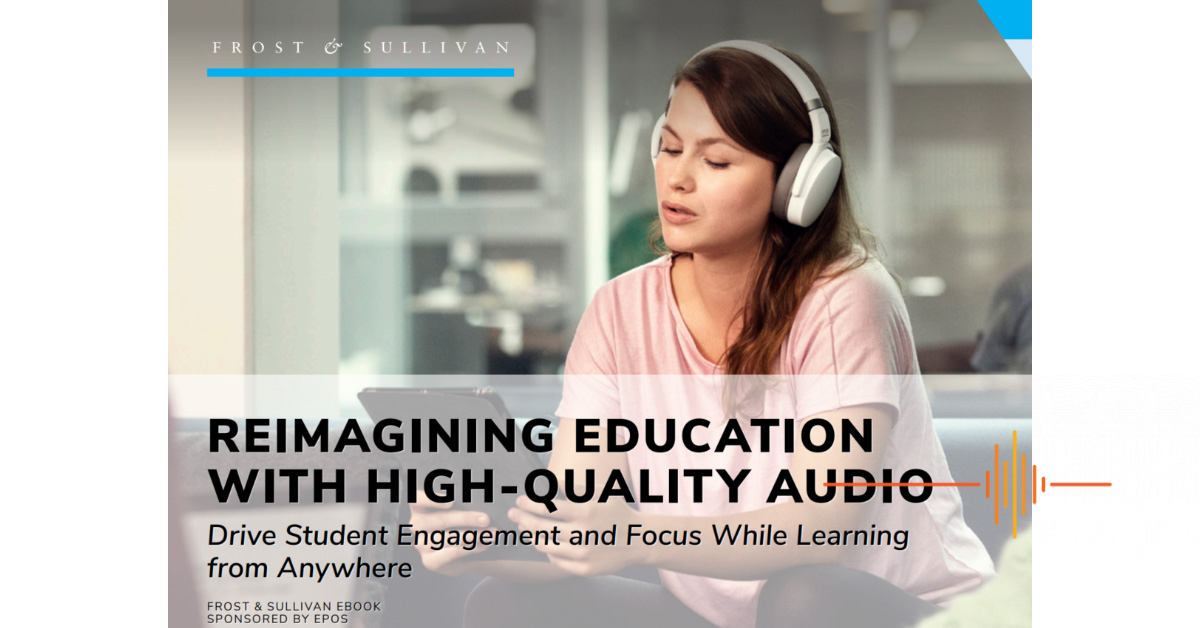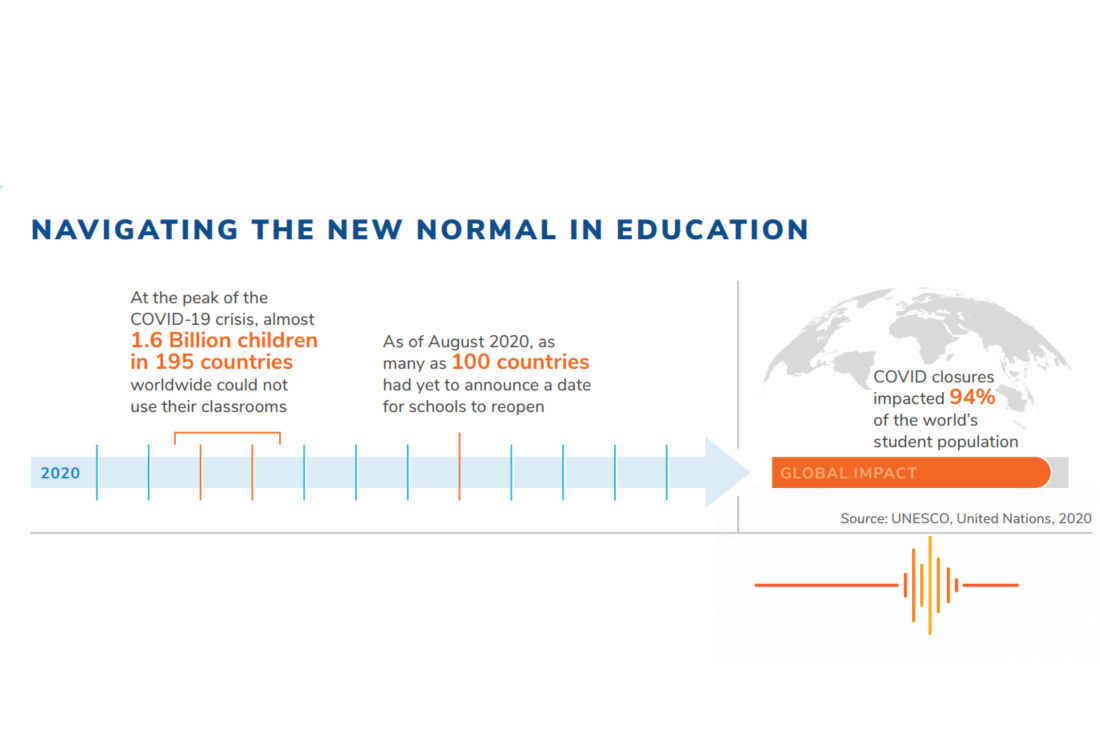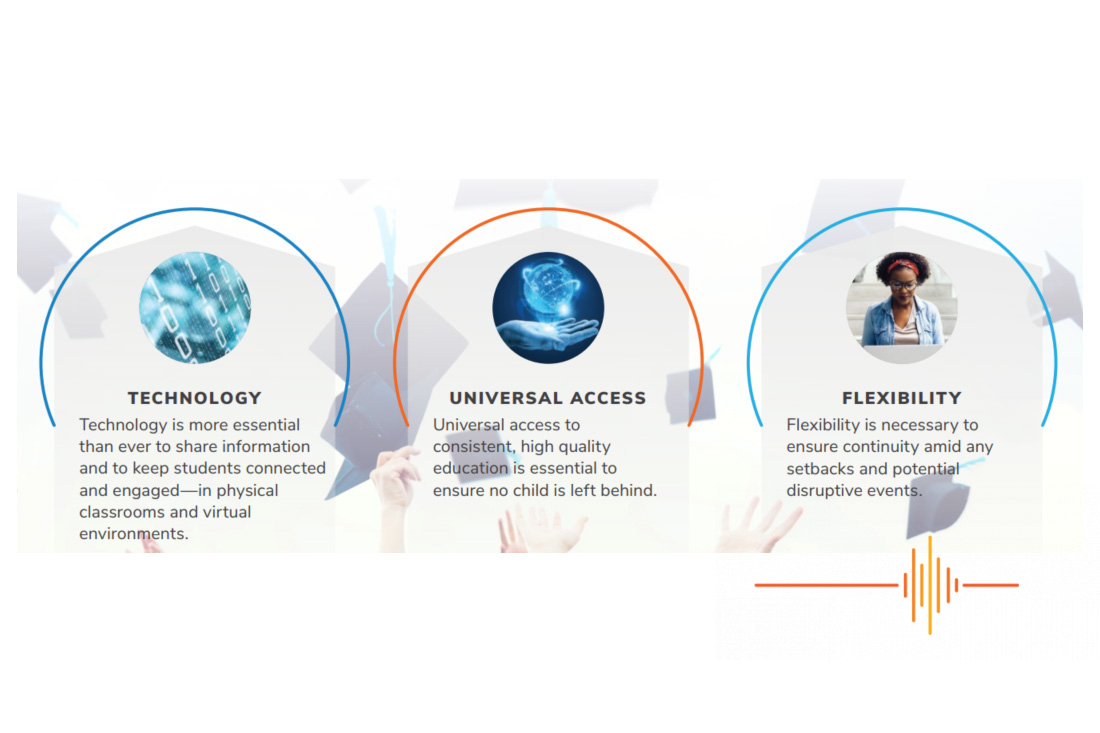As the SWOT analysis goes, out of crises often emerge new opportunities for innovation and improvement. The massive impact of COVID-19 on the education sector and the resultant scramble for remote learning solutions, does not negate the need for making long term, sustainable changes.
The positive view on 2020 and the COVID-19 pandemic, is the society’s amazing resilience and ability to adapt to conditions that was such a significant departure from the norm.
Technology has played a significant role in education for decades, I was on the ground when the first laptops programmes were being rolled out here in Victoria, Australia. I was also part of the first large scale Wi-Fi access point roll out at a school. Until recent times technology had largely a supporting role, but the events of the past year drove the need for a faster and more fundamental change.
“We should seize the opportunity to FIND NEW WAYS TO ADDRESS THE LEARNING CRISIS and bring about a set of solutions previously considered difficult or impossible to implement.” – United Nations, 2020.
The hybrid learning imperative – Improving engagement and inclusivity
Even before COVID-19, digitisation of education was already underway. The pandemic, combined with significant advances in digital education technologies, has become a catalyst for transformative changes in the future of education. It will not only prepare educational institutions better for disaster recovery but also become a sustainable means to improve the quality and reach of education.
According to UNESCO studies, at the peak of the COVID-19 crisis almost 1.6 Billion children in 195 countries worldwide could not use their classrooms. COVID closures impacted a staggering 94% of the world’s student population.
While the move to distanced learning risks widening the digital divide in some instances, it has also been found that remote learning can level the playing field, meaning that education becomes more universal for some of the most vulnerable and marginalised population groups.
Clear cost savings associated with remote learning have also become apparent, with significant savings made possible by reducing reliance on physical resources and minimising travel time. This also means that students can learn at their own pace and are able to catch up or revisit a topic with ease. Along with the potential for time and cost savings, going digital means that educators can improve the quality and relevancy of their curriculum by updating resources and materials in real time.
With education institutions around the world investing and improving their educational technology to better facilitate and provide online and distanced learning, longer-term benefits are also emerging. Learning and collaborating online is helping to prepare students with the kind of organisational acumen, emotional intelligence and self-discipline needed for modern careers.
Hybrid learning: Changing the what, why and how of education
- Equity and inclusion for the most vulnerable and marginalised population groups, including those with disabilities and the socioeconomically disadvantaged.
- Improved quality and relevancy of education via curriculum that can be easily updated in real time rather than reprinting expensive and environmentally
- unfriendly textbook materials; frequent and effective online teacher training.
- Lower costs with significant savings in physical resources required lowering tuition; travel time savings for students as well as educators.
- Greater engagement with the use of multimedia technologies that make learning more robust and interactive providing students with opportunities for flipped classrooms and blended learning.
- Disaster recovery and resiliency in times of crises.
The Victorian Minister for Education, The Hon. James Merlino MP Minister called for permanent changes to the school system after some students performed better during remote learning including those students who had been previously disengaged or distracted in classrooms, and high-ability students who have had the freedom to learn at their own pace.
Like the progressive workplace, every one is different and we are finally acknowledging that our children will benefit from a learning experience more tailored to their personality.
So why does robust audio matters?
The success of online learning has three critical technology elements—video, audio and content sharing. While video and content have played a pivotal role in ensuring the teacher student connection, the power of high-quality audio has often been overlooked.
Effective learning hinges on student engagement regardless of where learning takes place. In a recent survey of educators, more than 50% responded that “keeping students engaged digitally” and “student participation” are the top challenges they faced during remote learning. – Microsoft, 2020
The shift to online learning has not been without challenges. Long hours of online classes mean students need to focus harder to process non-verbal cues like facial expressions, body language and the tone and pitch of the voice; often leading to learning fatigue. Poor audio experiences have serious implications, 35% of those surveyed often feel frustration, irritation and annoyance due to bad audio, 25% experience moments of stress and 15% feel embarrassment or a lack of confidence. The impact of these experiences could have a serious impact on students’ ability to focus, engage and actively contribute to lessons.
The need for better connectivity and robust audio is clear and it is not only students who need to be focused on the conversation. For teachers and other educators, poor audio could be disastrous if critical information is missed. The ability to hear multiple voices, recognise who is speaking and engage with reactions from the class are all crucial parts of teaching. Without good audio, teachers risk missing out on crucial information and consequently might provide a less effective learning experience.
Investment in good audio is essential to long-term hybrid learning
Fortunately for many end-users, having effective audio equipment goes a long way to optimising the hybrid experience. According to EPOS, 37% of people feel that the right audio tools can reduce miscommunication, 40% feel that they would significantly reduce the need to repeatedly clarify information and 37% believe good audio would prevent participants from missing critical information.
Even once the disruption caused by the pandemic dissipates the shift to a more hybrid approach will remain. From an industry perspective, remote learning has made it easier to recruit teachers in some instances five-fold and as a result of the shift, the percentage of senior leaders and teachers planning to leave the profession had halved since 2019. Meanwhile, two thirds of students say they would welcome more education online post-pandemic.
“Remote learning means that students and teachers can be anywhere on any given day – whether it’s in the classroom, at home or on the go. The future of learning is already here. For students and educators in a virtual classroom, missing even 1% of what you’ve heard can often become 100% of your concern. Jeppe Dalberg-Larsen, President at EPOS comments: To ensure that hybrid learning remains effective, educators and students must recognise the importance of optimising concentration and comprehension by utilising high-quality audio tools.”
Vendor Spotlight: EPOS
EPOS is recognised as a flagship provider of high-end audio and video solutions for business professionals, online learning and the gaming community.
EPOS’ industry leading audio communication solutions span a complete portfolio of easy to use, flexible endpoints, native integration, unifed management services, and AI and analytics capabilities. From remote learning to meetings its comprehensive line of wired and wireless headsets are allowing educational institutions around the world to communicate and collaborate better. EPOS offers options for every student, educator and administrator.
I reviewed the EPOS Adapt 360 and is a huge fan. In particular, the centralised support, manageability, provisioning, reporting & analytics with EPOS Manager makes the value add a very eye catching proposition.
Download the full report by Frost & Sullivan, Reimagining Education with High-Quality Audio from the link.





